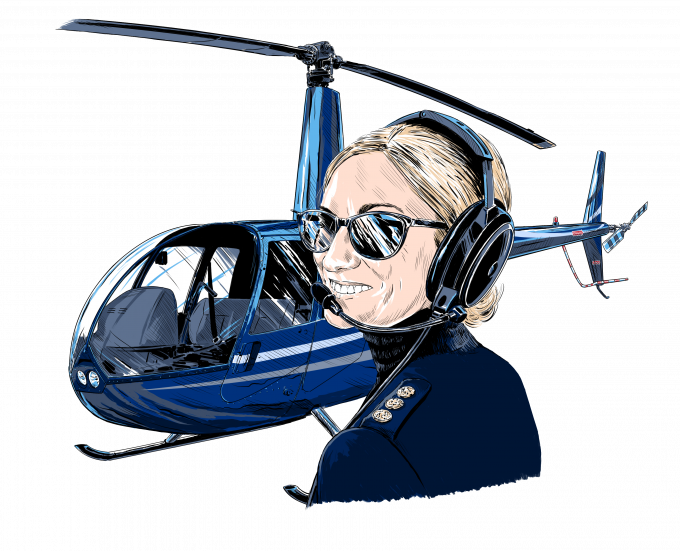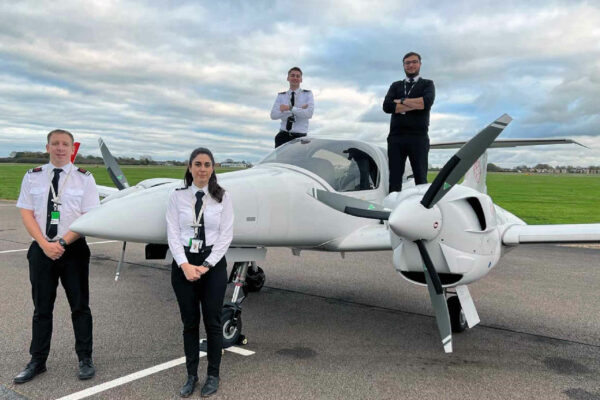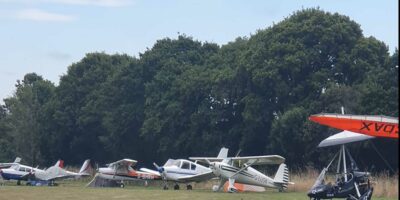I counted myself lucky to be among the innumerable overjoyed UK aviators out enjoying the (what felt like) unprecedented amounts of sunshine this month. My destination of choice in the R44 was one that’s become a favourite of mine in the last year or so: Lucknam Park, a beautiful country house hotel in Wiltshire.
Lucknam Park is a budget-friendly 10 minutes’ flight time from Kemble, where I rent the R44 from Voler Aviation Services. The length of the flight is, for me, less important when flying rotary, where the skill arguably lies less in what happens en route and more in the challenges of an off-airfield landing site. You don’t have to go far to experience the thrill of arriving somewhere by helicopter, so I tend to do short hops and save the longer trips for my fixed-wing flying.
Having flown in several times now, I know the Lucknam Park site well, but I always refresh my memory by spending time looking at the satellite imagery as part of my pre-flight planning.
‘PPR’ is the same as for most hotel sites, not that non-airfield landing sites refer to it as that: it’s a phone call to reception to request landing, and in this case emailed instructions with an aerial photo showing where to avoid overflying. Luckily, Lucknam is not among the handful of hotels that insist on copies of your insurance and other burdensome admin. Nor is it one where the staff sound thoroughly confused when you say you want to ‘fly in’.
One thing I’ve learned to watch with off-airfield landings is that the instructions you get sent aren’t usually written by aviators. Lucknam’s email warns you, “Please note you are inside RAF Brize Norton Zone”… you are nowhere near it. It also tells you to email the local police to inform them of your intended arrival; again, not necessary – one wonders how many emails ‘PC Cripps’ receives each year from rotary day trippers earnestly following these orders!
That lack of aviation knowledge is something I’ve learned to keep in mind for the siting of the helipad, too. In Lucknam’s case it’s in a sensible place with plenty of room, but my experience of certain other sites tells me that the ‘H’ isn’t always to be followed religiously, regardless of the stick you’ll inevitably get from non-pilots on social media for your supposedly bad parking. One hotel I flew to had put the ‘H’ right in the corner surrounded by bushes and trees – perhaps they were hoping for some free topiary!
“During WWII, as a private house near an aerodrome, Lucknam had Spitfires and Hurricanes parked on the driveway, camouflaged by the trees”
The flight to Lucknam Park from Kemble could hardly be more straightforward. On leaving the ATZ, you pick up a dead straight line of trees along an old section of the Fosse Way Roman road and follow it more or less the whole way there. There’s no need to climb high for such a short flight, and from a lower vantage point the pretty Cotswolds village of Castle Combe and its neighbouring racing circuit make an attractive sight telling you you’re almost there. Having received no reply from the seemingly-nearly-always-shut Colerne, it was traffic calls on its frequency for the descent in.
Lucknam Park is fairly typical in terms of the kinds of considerations to be made when flying into an off-airfield site. These begin with the challenge of actually spotting it – hotels are generally a lot less easy to identify than your average airfield! Having located it, we’ll usually do an orbit or two of the site (one higher, one lower) to look for obstacles such as power lines and to plan the approach – this is when you’ll spot things that aren’t obvious from the satellite imagery, such as sloping ground. It also helps make sure people on the ground are aware of your intentions; maybe they’ll even keep out of the way and call their dogs to them!
Coming into Lucknam, you then need to keep to the east of the avenue of trees on the approach, avoiding the horses. There’s a nice wide grassy area leading up to the helipad, so it’s not too challenging if the wind is roughly down that. You’ll always draw attention to yourself arriving at a hotel by helicopter, so you’ll likely find the cameras of hotel guests pointing at you – just to add to the pressure to perform the perfect landing.
Arriving at Lucknam is always fun, because even though the helipad is a very short and scenic walk from the hotel, they come out to greet you with a golf buggy and take you to the hotel in that. It’s always a warm welcome, and there are beautiful gardens to explore as well as the buildings themselves (there’s also a spa, but that’s still on my To Do list). As at most hotels, there’s no landing fee.
I like to take my passengers for sandwiches in the relaxed lounge area rather than indulging in a full à la carte lunch at the brasserie, which always feels a bit of a waste when one can’t enjoy a glass of wine with it. This time, we sat outside in the sunshine and savoured mocktails and a cheeseboard after making short work of the sarnies. Our table looked right up the beautiful tree-lined avenue that forms the driveway, a striking feature that actually has an interesting aviation connection. During WWII, the hotel – then still a private house – served as an informal HQ for Colerne Aerodrome next door, and the driveway was used to park Spitfires and Hurricanes under the protective camouflage of the trees.
We eschewed the return golf buggy in favour of walking – past the warbird parking of old – back to our whirlybird, wondering what the WWII airmen once stationed there would have made of our lunch excursion. Hard to believe how far aviation has come since then.







